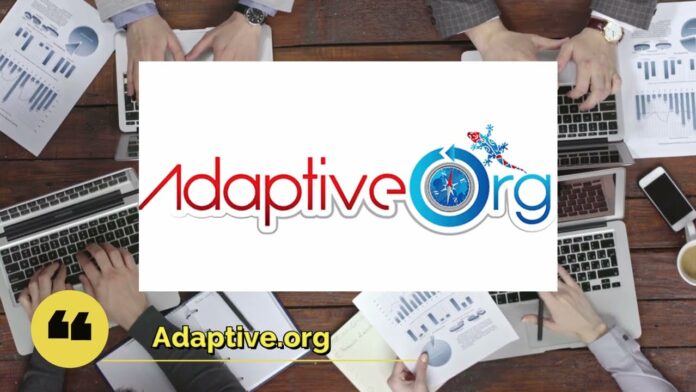The General Educational Development (GED) test has long been a vital pathway for individuals seeking an alternative to a traditional high school diploma. In today’s rapidly changing educational landscape, the GED remains a crucial tool for those aiming to advance their careers or pursue higher education. This article delves into the significance of the GED in modern education, exploring recent updates in testing procedures, the impact of these changes on test-takers, and the latest statistics on pass rates and trends. By comparing the GED to traditional high school diplomas and providing insights into preparation resources, we offer a comprehensive overview of the GED’s evolving role and its future outlook in the workforce.
xotools.xyz invites you to explore this topic thoroughly.
1. Overview of GED significance in education today.
The General Educational Development (GED) test has become an essential component of the educational system, offering a second chance for those who did not complete traditional high school. It serves as a key alternative credential, recognized across the United States and many other countries. The GED is often seen as a critical stepping stone for individuals who aim to improve their employment opportunities, gain access to higher education, or achieve personal goals.
In today’s education landscape, where flexibility and accessibility are increasingly valued, the GED stands out for its ability to accommodate diverse learners. This includes adults returning to education, young people who have left school early, and even those seeking to validate their skills after homeschooling. The significance of the GED extends beyond the individual; it also plays a vital role in workforce development, enabling employers to tap into a broader pool of qualified candidates.
The recognition of the GED as equivalent to a high school diploma by many employers and educational institutions underscores its importance. As more people seek alternative pathways to education and employment, the GED continues to be a crucial tool for leveling the playing field. It empowers individuals to overcome barriers to education and contributes to a more inclusive and equitable society.

2. Recent updates in GED testing procedures.
In recent years, the GED testing procedures have undergone significant updates to better align with current educational standards and the needs of test-takers. One of the most notable changes is the shift towards computer-based testing, which has made the exam more accessible and streamlined. This transition allows for quicker result processing and offers enhanced features like on-screen calculators and the ability to highlight text, aiding test-takers during the exam.
Additionally, the content of the GED test has been updated to reflect modern curriculum standards, focusing on critical thinking and problem-solving skills. The test now includes more real-world scenarios, ensuring that the knowledge and skills assessed are relevant to today’s job market and further education.
Furthermore, there has been an expansion in the availability of testing centers and online proctoring options, making it easier for individuals to schedule and complete the exam at their convenience. These updates demonstrate a commitment to maintaining the GED as a relevant and accessible alternative to traditional high school diplomas.

3. Impact of GED changes on test-takers.
The recent changes in GED testing procedures have had a significant impact on test-takers, both in terms of accessibility and preparation. The move to computer-based testing has been particularly beneficial, providing a more user-friendly experience that aligns with the digital skills many test-takers already possess. This shift has reduced the anxiety associated with traditional paper-based exams, allowing individuals to focus more on the content rather than the format of the test.
The updated curriculum, emphasizing critical thinking and real-world application, has also influenced how test-takers prepare for the GED. While the changes have raised the difficulty level, they ensure that those who pass are equipped with relevant, marketable skills. This has motivated many to engage in more thorough preparation, often turning to online resources and GED prep courses designed to meet the new standards.
Additionally, the increased availability of testing centers and online proctoring has made it easier for individuals to schedule exams at times that suit their personal and professional lives. Overall, these changes have made the GED a more robust and accessible credential, empowering test-takers to achieve their educational and career goals.

4. Statistics on GED pass rates and trends.
Recent statistics on GED pass rates reveal important trends that reflect the evolving nature of the exam and its growing significance in education. While the transition to a more rigorous, computer-based test initially led to a dip in pass rates, recent years have shown a steady improvement as test-takers and educators adapt to the new format and content.
Data from the GED Testing Service indicates that pass rates have gradually risen, with approximately 70-75% of test-takers now successfully earning their GED. This increase is attributed to enhanced preparation resources, such as online practice tests, study guides, and targeted prep courses that better align with the updated exam standards. Additionally, the availability of flexible testing options, including online proctoring, has allowed more individuals to take the test under conditions that suit their schedules and reduce test-day stress.
Another trend worth noting is the demographic shift among GED test-takers. There has been a rise in younger individuals, particularly those under 25, seeking the GED as a quicker, more flexible alternative to completing high school. This demographic change reflects broader societal trends where non-traditional education pathways are becoming more accepted and valued. Overall, these statistics highlight the growing relevance and accessibility of the GED as an alternative educational credential.
5. Comparison with traditional high school diplomas.
When comparing the GED to traditional high school diplomas, both credentials serve as vital markers of educational attainment, but they cater to different needs and circumstances. A high school diploma typically represents the completion of four years of structured education, encompassing a broad range of subjects and extracurricular activities. It is often associated with a more comprehensive educational experience, including social development and participation in school communities.
On the other hand, the GED is designed as an alternative for those who did not complete high school but wish to obtain a credential that demonstrates equivalent knowledge and skills. While the GED covers core subjects like mathematics, science, social studies, and language arts, it focuses more on critical thinking and practical applications, aligning with the needs of adult learners and non-traditional students.
In the job market and higher education, both the GED and a high school diploma are generally recognized as equivalent. However, the perception can vary depending on the industry or institution. Despite this, the GED provides a crucial opportunity for those who require flexibility or have faced barriers to completing traditional high school, making it an invaluable option for many.
6. Insights into GED preparation resources.
Effective preparation is key to succeeding on the GED, and there are numerous resources available to help test-takers meet the updated exam standards. One of the most popular options is online prep courses, which offer structured learning modules tailored to the specific content areas of the GED. These courses often include practice tests, video lessons, and interactive exercises, allowing learners to engage with the material at their own pace.
In addition to online courses, many community colleges and adult education centers provide GED preparation classes. These in-person programs offer guided instruction from experienced educators who can address individual learning needs and provide personalized support. For those who prefer self-study, there are comprehensive study guides and workbooks available, which cover all sections of the test in detail.
The GED Testing Service also offers official practice tests that mimic the actual exam format, helping test-takers familiarize themselves with the question types and time constraints. These preparation resources have been instrumental in improving pass rates and ensuring that learners are well-equipped to succeed on the GED exam.
7. Future outlook for GED programs.
The future outlook for GED programs appears promising, with several key trends indicating continued growth and adaptation. As educational and workforce needs evolve, GED programs are likely to become even more integral in providing alternative pathways to education and employment. Advances in technology will further enhance the flexibility and accessibility of GED testing, with potential expansions in online proctoring and digital resources making it easier for individuals to prepare and test at their convenience.
Additionally, the ongoing updates to the GED curriculum are expected to keep pace with changes in educational standards and job market demands. This will ensure that the GED remains a relevant and valuable credential for those seeking to advance their education or career.
Partnerships with community organizations and educational institutions are also anticipated to strengthen, expanding the reach of GED programs and increasing support for test-takers. With these developments, the GED is well-positioned to continue serving as a crucial tool for educational attainment and workforce readiness, helping a diverse range of learners achieve their goals and contribute to a more inclusive and skilled workforce.
8. Expert perspectives on the value of GEDs in the workforce.
Experts widely recognize the GED as a valuable credential in the workforce, offering a viable alternative to traditional high school diplomas. According to career counselors and educational researchers, the GED provides essential opportunities for individuals who may have faced barriers to completing high school. Employers generally view the GED as equivalent to a high school diploma, validating the holder’s basic educational competencies and readiness for entry-level positions.
Additionally, professionals in human resources emphasize that the GED can be a stepping stone to further education and specialized training, which enhances employability and career advancement. The focus on critical thinking and problem-solving skills in the GED curriculum aligns well with the competencies sought by employers, making GED graduates competitive in the job market.
Overall, experts affirm that the GED’s role in the workforce is increasingly significant, as it enables a broader range of individuals to pursue career goals and contribute effectively to their chosen fields.
The GED remains a vital educational credential, offering flexible pathways for those seeking to advance their education and career opportunities. With recent updates improving accessibility and aligning the test with modern standards, the GED continues to adapt to the needs of diverse learners. As preparation resources and testing options expand, the GED’s significance in the workforce grows, validating the skills and knowledge of its holders. Looking ahead, the GED is poised to play an increasingly important role in fostering educational and professional success.
xotools.xyz









